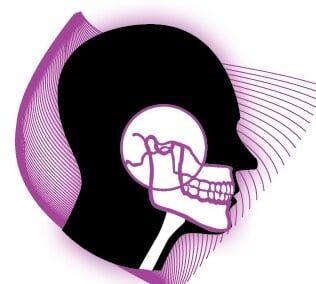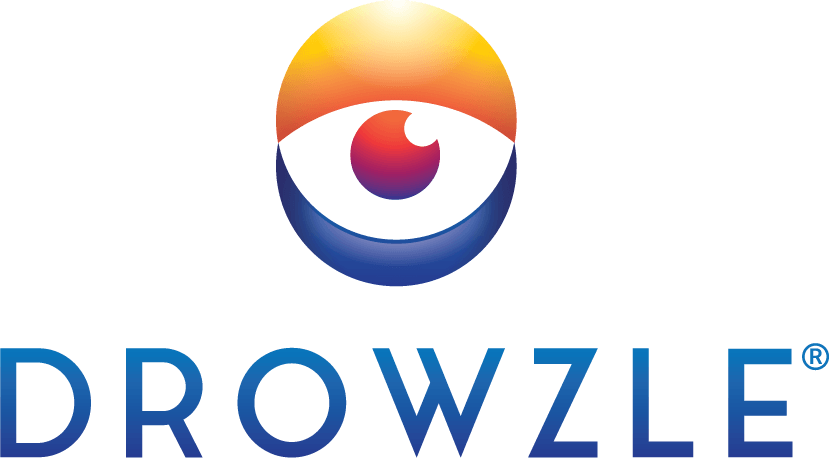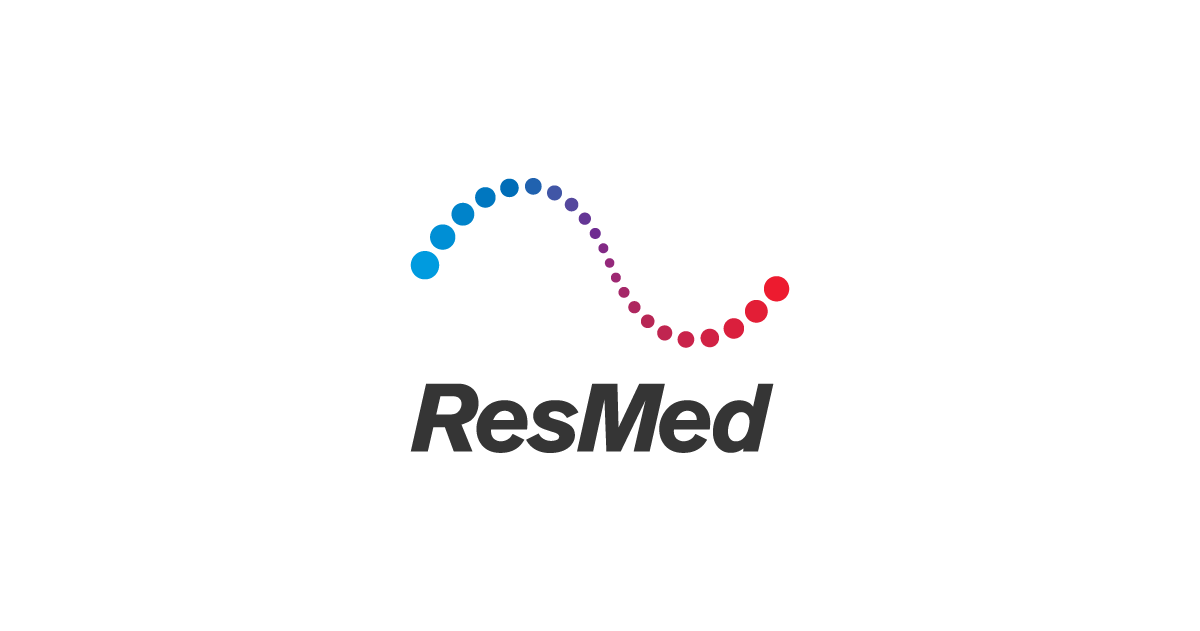GENERAL DENTIST IN CASPER, WY
Exams & Check Ups
Dr. John Bouzis specializes in working with each patient to ensure both a calm and comfortable experience when you visit our office. We make it easy for you to maintain a healthy smile. Whether you need a preventive exam or routine cleaning and check up, feel confident knowing our dentists and staff are ready to assist you and improve your smile.
Diagnostic Appointment
Coming Soon
Needing A Second Opinion
Health Care Markets are more fragmented than ever before and that trend will continue as discretionary income diminishes and patient’s values adjust accordingly. Our reimbursement system has never been more strained and as each player seeks to better position themselves in order to capture what they feel is their fair share of the shrinking market profitability there will emerge increasingly damaging side effects for patients. This trend and direction has already been established. It is well known that the expense of medical insurance has doubled, and in some regions tripled, while deductibles have sky rocketed and coverage has significantly decreased.
I believe that whether you select a 30 minute or a 60 minute (recommended) consultation you will leave knowing and understanding issues like you never knew was possible. Know that you are under no obligation to have treatment in my office and as testimony to that we will not provide service if you are established with another provider. In that manner we can have an unbiased discussion of the possibilities that are in your best interest.
Want To Know More Specifics Regarding Second Opinion Consultations? Scroll Down To Additional Information.
Ready To Schedule An Appointment Or Request A Call Back For More Information? Use The Blue Buttons To Your Right.
Or The Old Fashioned Way Just Give Us A Call At 307-265-3595
TMD, Head & Neck Pain & Cranio-Mandibular Disorders
Coming Soon
Extractions
A dental extraction might be recommended if a tooth could not be restored by any other method or if wisdom teeth need to be removed. The extracted tooth could then be replaced with either a removable prosthesis such as dentures or a fixed prosthesis such as a bridge or implant. Our professional and experienced staff will recommend the best extraction solution for you to maintain a healthy smile.
Bridges
Bridges are often used to replace missing or extracted teeth. To ensure their durability, bridges are made from porcelain, metal, gold, or alloys. Bridges may be recommended to replace a missing tooth to avoid structural damages and changes to your mouth which can cause difficultly speaking and eating.
Crown
A dental crown or cap is a tooth-shaped cover that is placed over a weakened or damaged tooth to restore its natural appearance and prevent further deterioration. Crowns are used in cases of severely chipped or broken teeth, to cover the exposed area of a tooth following a root canal procedure, to replace a large old filling or for cosmetic reasons. When a filling is not a viable solution to correcting the damage sustained by a tooth, crowns can provide a long-term solution to restoring the function of your teeth and enhancing the appearance of your smile. Crowns can be made of all metal, all porcelain, or a combination of both. Because all crowns are custom made for each patient, it may take more than one appointment to complete. At your first visit, the area is numbed to make you comfortable.
Digital X-Rays
This is a focused beam of x-ray particles, which produces an image on special sensor and shows the structure through which it passed. This gives the familiar black and white images that doctors and dentists use to diagnose problems. X-rays are a necessary part of the diagnostic process.
Dr. John Bouzis specializes in working with each patient to ensure both a calm and comfortable experience when you visit our office. We make it easy for you to maintain a healthy smile. Whether you need a preventive exam or routine cleaning and check up, feel confident knowing our dentists and staff are ready to assist you and improve your smile.
Diagnostic Appointment
Coming Soon
Needing A Second Opinion
Health Care Markets are more fragmented than ever before and that trend will continue as discretionary income diminishes and patient’s values adjust accordingly. Our reimbursement system has never been more strained and as each player seeks to better position themselves in order to capture what they feel is their fair share of the shrinking market profitability there will emerge increasingly damaging side effects for patients. This trend and direction has already been established. It is well known that the expense of medical insurance has doubled, and in some regions tripled, while deductibles have sky rocketed and coverage has significantly decreased.
I believe that whether you select a 30 minute or a 60 minute (recommended) consultation you will leave knowing and understanding issues like you never knew was possible. Know that you are under no obligation to have treatment in my office and as testimony to that we will not provide service if you are established with another provider. In that manner we can have an unbiased discussion of the possibilities that are in your best interest.
Ready To Schedule An Appointment Or Request A Call Back For More Information? Use The Blue Buttons To Your Right.
Or The Old Fashioned Way Just Give Us A Call At 307-265-3595
Coming Soon
Extractions
A dental extraction might be recommended if a tooth could not be restored by any other method or if wisdom teeth need to be removed. The extracted tooth could then be replaced with either a removable prosthesis such as dentures or a fixed prosthesis such as a bridge or implant. Our professional and experienced staff will recommend the best extraction solution for you to maintain a healthy smile.
Bridges
Bridges are often used to replace missing or extracted teeth. To ensure their durability, bridges are made from porcelain, metal, gold, or alloys. Bridges may be recommended to replace a missing tooth to avoid structural damages and changes to your mouth which can cause difficultly speaking and eating.
Crown
A dental crown or cap is a tooth-shaped cover that is placed over a weakened or damaged tooth to restore its natural appearance and prevent further deterioration. Crowns are used in cases of severely chipped or broken teeth, to cover the exposed area of a tooth following a root canal procedure, to replace a large old filling or for cosmetic reasons. When a filling is not a viable solution to correcting the damage sustained by a tooth, crowns can provide a long-term solution to restoring the function of your teeth and enhancing the appearance of your smile. Crowns can be made of all metal, all porcelain, or a combination of both. Because all crowns are custom made for each patient, it may take more than one appointment to complete. At your first visit, the area is numbed to make you comfortable.
Digital X-Rays
This is a focused beam of x-ray particles, which produces an image on special sensor and shows the structure through which it passed. This gives the familiar black and white images that doctors and dentists use to diagnose problems. X-rays are a necessary part of the diagnostic process.
Teeth Whitening
Enhance the appearance of your smile with Dr. John Bouzis teeth whitening service. While there are many whitening products on the market, our dentists provide the safest and most effective means of keeping your smile bright, even for sensitive teeth. Our knowledgeable dental professionals will give you detailed instructions on essential care before and after your whitening treatment. We can get you on your way to that whiter, brighter smile in no time.
Enhance the appearance of your smile with Dr. John Bouzis teeth whitening service. While there are many whitening products on the market, our dentists provide the safest and most effective means of keeping your smile bright, even for sensitive teeth. Our knowledgeable dental professionals will give you detailed instructions on essential care before and after your whitening treatment. We can get you on your way to that whiter, brighter smile in no time.

Invisalign
Get the smile of your dreams with minimal social trauma with Invisalign. Unlike traditional braces, Invisalign offers the flexibility of being undetectable and removable. A consultation with the team at Dr. John Bouzis is the first step in knowing if you are an ideal candidate.
What is Invisalign, exactly?
Invisalign is a smart way to align a smile that doesn't require the rigorous retraining of braces. They are comfortable aligners made by taking a 3D scan of your teeth, and developing a strategy to get you to your best smile over time. If you are an adult looking to improve the alignment of your teeth, or a teen that may not require traditional braces, invisalign is perfect for you. They are discreet, removable, and allow you to continue your oral health routine unobstructed.
CEREC™ - Same Day Crown
A dental crown or cap is a tooth-shaped cover that is placed over a weakened or damaged tooth to restore its natural appearance and prevent further deterioration. Crowns are used in cases of severely chipped or broken teeth, to cover the exposed area of a tooth following a root canal procedure, to replace a large old filling or for cosmetic reasons. When a filling is not a viable solution to correcting the damage sustained by a tooth, crowns can provide a long-term solution to restoring the function of your teeth and enhancing the appearance of your smile. Crowns can be made of all metal, all porcelain, or a combination of both. Because all crowns are custom made for each patient, it may take more than one appointment to complete. At your first visit, the area is numbed to make you comfortable.
Additional Information
Health Care Markets are more fragmented than ever before and that trend will continue as discretionary income diminishes and patient’s values adjust accordingly. Our reimbursement system has never been more strained and as each player seeks to better position themselves in order to capture what they feel is their fair share of the shrinking market profitability there will emerge increasingly damaging side effects for patients. This trend and direction has already been established. It is well known that the expense of medical insurance has doubled, and in some regions tripled, while deductibles have sky rocketed and coverage has significantly decreased.
I believe that whether you select a 30 minute or a 60 minute consultation you will leave knowing and understanding issues like you never knew was possible. Know that you are under no obligation to have treatment in my office and as testimony to that we will not provide service if you are established with another provider. In that manner we can have an unbiased discussion of the possibilities that are in your best interest.
A discussion of those implications and side effects:
We live in a country where we spend exponentially more on health care per individual than anywhere else in the world but with less favorable outcomes. There are more reasons this occurs than I can describe here but my intent in providing a second opinion service is regardless of those reasons all patients have the right to make choices based upon reliable, factual and unbiased information.
Restated again: I believe that whether you select a 30 minute or a 60 minute consultation, you will leave knowing and understanding issues like you never knew was possible. You are under no obligation to have treatment in my office and as testimony to that we will not provide service if you are established with another provider. In short you can believe what we share as we have nothing to gain other than the comfort of knowing you will be positioned to make better choices that suite your needs rather than someone else’s profit margin.
Professionally,
Dr. John L. Bouzis
Get the smile of your dreams with minimal social trauma with Invisalign. Unlike traditional braces, Invisalign offers the flexibility of being undetectable and removable. A consultation with the team at Dr. John Bouzis is the first step in knowing if you are an ideal candidate.
What is Invisalign, exactly?
Invisalign is a smart way to align a smile that doesn't require the rigorous retraining of braces. They are comfortable aligners made by taking a 3D scan of your teeth, and developing a strategy to get you to your best smile over time. If you are an adult looking to improve the alignment of your teeth, or a teen that may not require traditional braces, invisalign is perfect for you. They are discreet, removable, and allow you to continue your oral health routine unobstructed.
CEREC™ - Same Day Crown
A dental crown or cap is a tooth-shaped cover that is placed over a weakened or damaged tooth to restore its natural appearance and prevent further deterioration. Crowns are used in cases of severely chipped or broken teeth, to cover the exposed area of a tooth following a root canal procedure, to replace a large old filling or for cosmetic reasons. When a filling is not a viable solution to correcting the damage sustained by a tooth, crowns can provide a long-term solution to restoring the function of your teeth and enhancing the appearance of your smile. Crowns can be made of all metal, all porcelain, or a combination of both. Because all crowns are custom made for each patient, it may take more than one appointment to complete. At your first visit, the area is numbed to make you comfortable.
Additional Information
Health Care Markets are more fragmented than ever before and that trend will continue as discretionary income diminishes and patient’s values adjust accordingly. Our reimbursement system has never been more strained and as each player seeks to better position themselves in order to capture what they feel is their fair share of the shrinking market profitability there will emerge increasingly damaging side effects for patients. This trend and direction has already been established. It is well known that the expense of medical insurance has doubled, and in some regions tripled, while deductibles have sky rocketed and coverage has significantly decreased.
I believe that whether you select a 30 minute or a 60 minute consultation you will leave knowing and understanding issues like you never knew was possible. Know that you are under no obligation to have treatment in my office and as testimony to that we will not provide service if you are established with another provider. In that manner we can have an unbiased discussion of the possibilities that are in your best interest.
A discussion of those implications and side effects:
- 1. It is becoming more and more common for medical companies to provide verification of benefits, commonly termed VOB’s, without actually telling providers or patients what their responsibility is going to be until the patient has already received care. They say things such as coverage is 70% of what they allow yet won’t reveal the allowable – a figure they actually calculate and set. This makes it impossible for patients or your provider to determine out of pocket expense. Insurance carriers use this as a method to limit patients from making choices to move forward with their healthcare due to the unknown economic risk and it saves them (the insurance company) money.
- 2. This lack of transparency hides the fact that medical patients are rarely charged the same for like procedures even if performed on the same day at the same facility. This is a result of the unspoken side effect of the “cost shifting”
that occurs in order to make some pay more to make up for those paying less.
- 3. There exits reimbursement systems that in their development plan have managed to significantly reduce the patients copay and in some instances actually eliminated it for those more commonly performed procedures. At first glance this seems better for patients as the costs are absorbed by the provider or the facility providing care, but is it? Let us use the sleep disorder, obstructive sleep apnea, as an example but first some statistics:
- a. 77% of those with Severe Obesity
suffer with sleep apnea
- b. 73% of those with Congestive Heart Failure
suffer with sleep apnea
- c. 72% of those with Type 2 Diabetes
suffer with sleep apnea
- d. 50% of those with Atrial Fibrillation
suffer with sleep apnea
- e. 35% of those with High Blood Pressure
suffer with sleep apnea
- f. 30% of those with Coronary Artery Disease
suffer with sleep apnea
- g. An individual with Sleep Apnea
has a 68% increased chance of having a Stroke, a 58% increased chance of suffering from Depression
and a 60% increased chance of having Metabolic Syndrome.
- h. Put simply we all know someone who has Obstructive Sleep Apnea
even if they don’t know as a result of not yet being diagnosed. 20% of the population has SDB and has no clue of its danger or existence and it still remains 90% undiagnosed. More on that later.
- i. And for those not yet alarmed by the above statistics consider this: across age groups those with no sleep apnea have a near 96% chance of living another 18 years while those with severe sleep apnea have less than a 60% chance of doing so - Wisconsin Cohort Study. Getting sleep apnea treated saves lives - perhaps your own !.
- j. Yet research states that sleep apnea remains 90% undiagnosed and even when diagnosed 50 % of patients fail to comply with the prescribed treatment recommendations after the first year – at five years this increases to 83% noncompliance. Is it becoming clear that we don’t often get SDB diagnosed and when we do treatment largely fails? You are 10 times more likely to get a referral for sleep disorders if you yourself bring it up to your medical provider. As a result it usually gets diagnosed only after a comorbidity (one of the above diseases) has already occurred. The reimbursement system plays a role in this - let us look at why and how that occurs.
- The Reason: Medical practices are poorly reimbursed for diagnosing SDB if much at all and the short of it is that most feel that is largely the reason sleep disorders are 90% undiagnosed; why it is mostly discovered after a cardiac issue, stroke or diabetes has already occurred; and why you are 10 times more likely to be referred if you bring it up first. Lowered reimbursement systems such as PPO’s (preferred provider organizations) continue to grow, limiting care under the guise of improving out come when in fact it has far more to do with third party profitability at the expense of patient care. Please do not mislead yourself into thinking that I believe the present delivery system should remain as it is because it is certainly not without its own significant problems. Like many things today you are better served by being well enough informed so that you can self-advocate, the truth of the matter is that is becoming increasingly important at a rapid pace.
- As a side note, can you imagine the possibility of some of the terminology like preferred provider organization, not medically necessary, usual and customary, unintended consequences, as well as the obvious phrase third parties use to describe that their intent is to never in any manner dictate treatment or interfere with the doctor / patient relationship - being tossed around in insurance companies board room meetings in an attempt to disguise their leverage and influence to healthcare markets by using the warmest and fuzziest words they could come up with in order to make themselves look good by making others look bad. Doesn’t it sometimes feel that after the policy is in place the battle begins to delay and deny treatment?
- The Impact On Dental Care: There is little doubt that third party systems in dentistry have come “late to the party” so to speak as they have been molding the medical healthcare system to their liking for decades, but don’t think their foot print in dentistry is not growing. I’ll demonstrate through some examples:
- 1. The third party reimbursement systems in dentistry can function with or without patient copays. Typically there is what the insurance self -determines to pay and the patient pays the rest as it is in balance billing. There are however an increasing number of carriers that in order to better penetrate (sell policies) the market have disallowed billing the patient anything above what the carrier pays – that is they forbid balance billing requiring participating dentists to write off the portion that the patient might normally be required to pay. Many years ago the write off started out low enough to be almost no more than the cost of having billing department s, staff and the cost of postage. As carriers gather up large enough market share they begin to have their way with not only the providers through imposing 25% to sometimes over 40% write offs but then also they begin to limit patients choices of what they can and can’t elect to have done – essentially they have restricted you r freedom of choice and in most situations without you even being aware of it being done in order to enhance their own profitability.
- 2. So just in the same way reimbursement systems have cleverly designed terminology to soften their image they have done the exact same thing as they attempt to gather up and improve their market penetration. They have accelerated this process by passing on what normally would be patients copay to providers. On the surface at least this seems good for patients – and it is when considering the reduction of out of pocket costs. There are however often overlooked problems with this:
- a. I have already mentioned that the process limits choices of both options in treatment and where that treatment can be performed.
- b. But a much more significant problem is that, just like the medical community under diagnosing sleep disordered breathing by not bringing it up to patients because of the reimbursement systems, this is beginning to happen in dentistry as a result of providers having to absorb the cost through write offs if they present the type of dentistry we can technologically deliver today. Now we all know that there is no one way that fits everyone but a system should clearly be incentivized to provide every patient the options available and then allow freedom of choice to occur within the individual own values for care and outcome. Systems designed that encourage lack of transparency as well as restriction of choices and then stand by allowing third parties to hide under the umbrella of blaming “unintentional consequences” should anger anyone that is being taken advantage of as if we can’t figure it out or don’t know what is taking place – people aren’t stupid but rather kept in the dark.
- c. Markets can fragment, patients can be given choices always but providers have a never ending obligation to provide proper “informed consent” and information to the highest of our ability to each and every patient. There are many patients that would never choose some of the more sophisticated treatment options but it should always remain their choice to make and their right to do so should be defended by all systems. Sadly that is becoming not the case today. Getting what your insurance company negotiated in the policy is one thing – being forced to remain quite is entirely different especially when it profits others.
We live in a country where we spend exponentially more on health care per individual than anywhere else in the world but with less favorable outcomes. There are more reasons this occurs than I can describe here but my intent in providing a second opinion service is regardless of those reasons all patients have the right to make choices based upon reliable, factual and unbiased information.
Restated again: I believe that whether you select a 30 minute or a 60 minute consultation, you will leave knowing and understanding issues like you never knew was possible. You are under no obligation to have treatment in my office and as testimony to that we will not provide service if you are established with another provider. In short you can believe what we share as we have nothing to gain other than the comfort of knowing you will be positioned to make better choices that suite your needs rather than someone else’s profit margin.
Professionally,
Dr. John L. Bouzis





